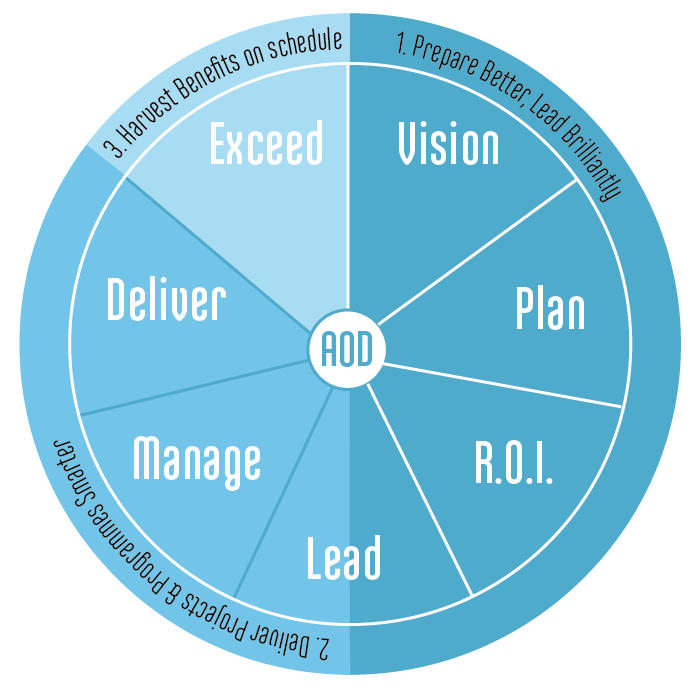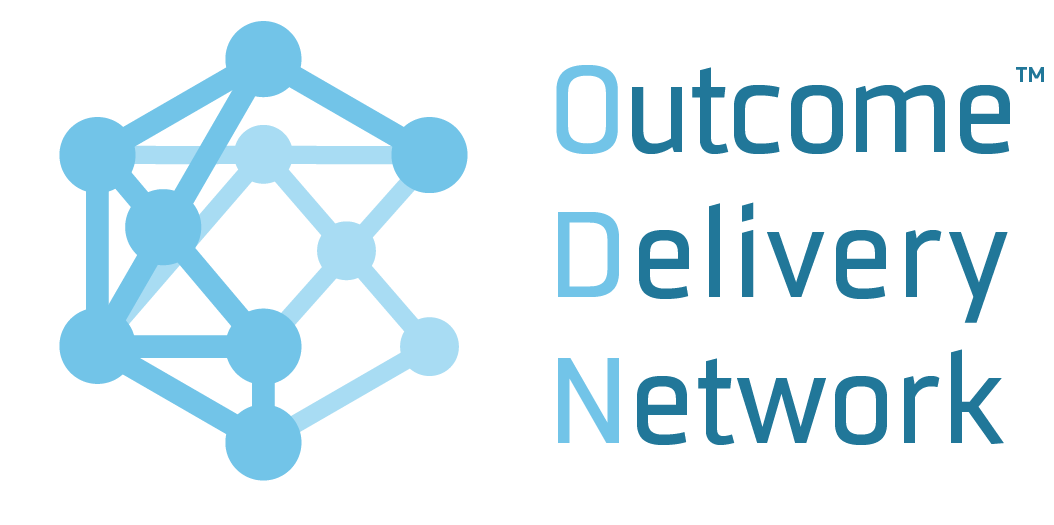Change Leadership Innovation
ODN Members focus on “Show-Me” Events and Successful Change Leadership techniques in implementing our Assured Outcome Delivery (AOD) approach.

- One of AOD's innovations is in recognising the need for implementation sequence flexibility to meet different circumstances.
- If you are considering using AOD to ‘repair’ a transformation programme or find more benefits to recover a business case benefits total, then AOD conducts the ROI steps as soon as outcomes are defined as SMEs, before (re) iterating Plan and ROI steps further to establish senior ownership of new benefits AOD will identify.
- We ensure managers accept accountability for leading the delivery of 'Show-Me' Events (SMEs) by performance contracts and advise on incentive rewards for achievement and consequences for failure to deliver.
- We advocate leadership follow through in scheduling and inspection of the desired changes, and also in witnessing the measurement of benefits by the Sponsor.
- AOD was developed as a pragmatic response to the failures we observed over the past 30 years where organisations were unsuccessful in delivering change or the desired benefits that ‘justified’ the considerable time and cost invested to achieve it.
- AOD has techniques and processes designed to address the 8 key lessons identified by John Kotter in the seminal HBR article – "Why Transformation Efforts Fail?" [1]
- We help the Board / Senior Management team articulate their Vision for change through the expression of 'Show-Me' Events (SMEs) in Stage 1.
- We then create a powerful guiding coalition to lead change by asking the Board to accept accountability for leading the delivery of these SMEs.
- We establish a sense of urgency on the need for change and a clear Vision for change through our Socialisation process, alongside our change and communication toolsets described in Stage 2.
- We extend benefits, hence improve business cases, by considering all potential Value Drivers. AOD identifies 103 parameters which can drive costs (down) or revenue (up) or create value; systematic consideration of these against desired outcomes always increases benefits realisation.
- Our bias-free estimation techniques ensure benefits are achievable, with a systematic evaluation and ownership ‘challenge’ which factors out potential double counting and reflects organisational experience of benefits realisation.
- We plan backwards from desired outcomes, (right to left) producing lean projects and programmes with shortest possible durations.
- Our benefits control process includes mandatory re-routing to solve problems and risks, rather than contributing to a typical risk management ‘industry’.
- We institutionalise experiential learning and new approaches in the lead and prepare stage – we never start until we’ve committed to act on the lessons of the past!
[1] HARVARD BUSINESS REVIEW March-April 1995; HBR On Point Product Number 4231
